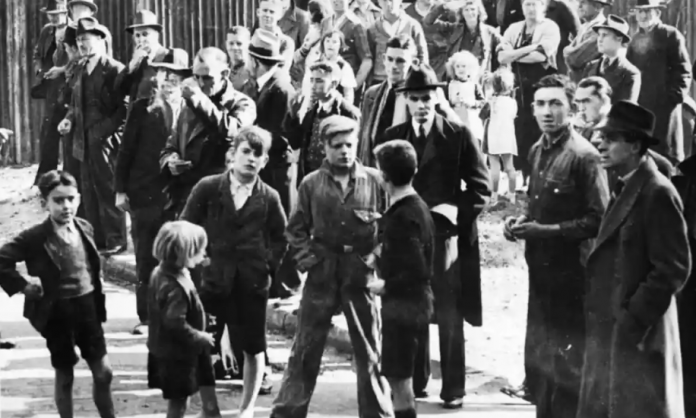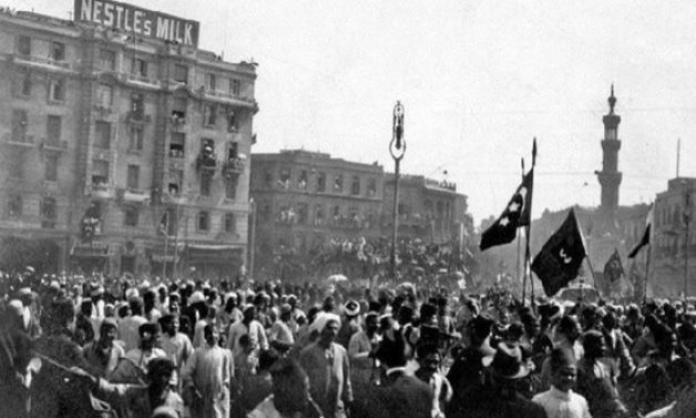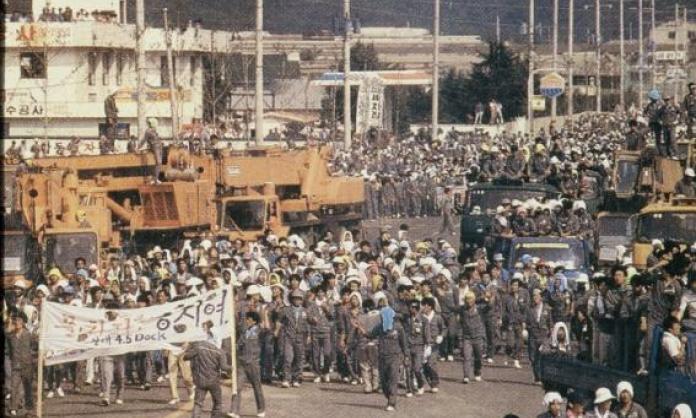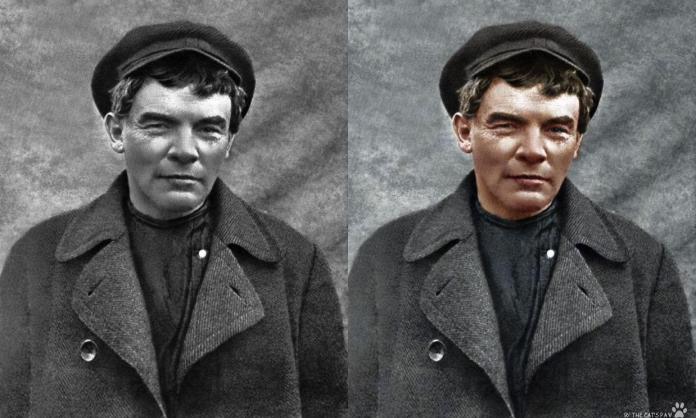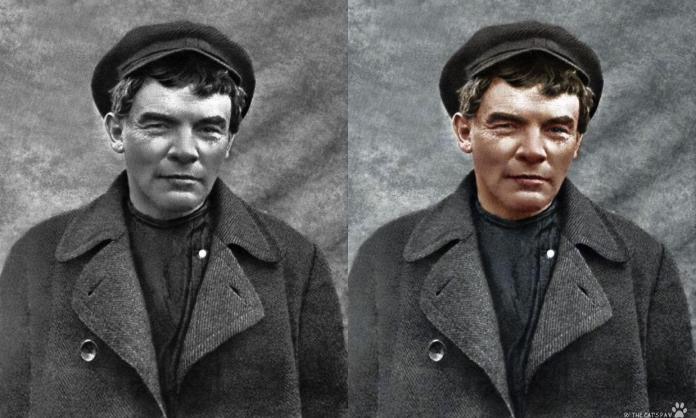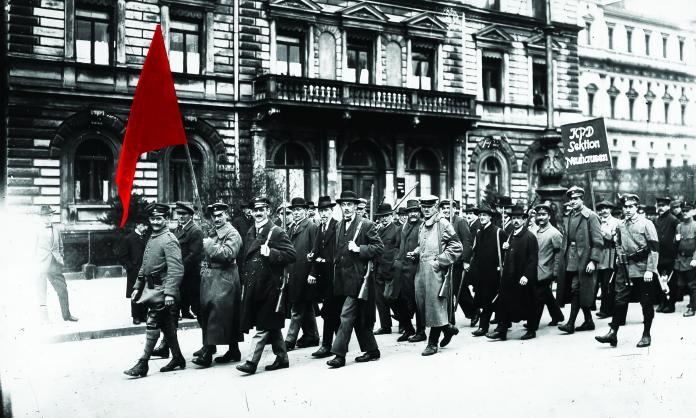We met them at the door, boys,
We met them at the door.
At Newtown and Bankstown
We made the cops feel sore.
We fought well,
They got hell,
And we met them at the door.
During the 1930s Great Depression, the above lyrics were put to music by unemployed workers to pay tribute to two of the biggest battles against landlords and police in Sydney’s history.
Eviction was a constant threat for working-class people. As early as 1929, the unemployment rate had jumped to 11 percent; by 1932 it had reached 29 percent, with no sign of economic recovery on the horizon. Abandoned by the system, masses of unemployed workers were left to figure out how to make ends meet.
While state governments set up relief programs to stave off mass discontent and social collapse, the standard of living they provided was very low. The new welfare system in New South Wales saw the authorities give out coupons for staples such as tea, flour, and meat rather than cash; without cash, the unemployed could not pay rent.
To obtain even these meagre rations, the unemployed were required to fill out a 32-item questionnaire designed to make accessing welfare payments as difficult and humiliating as possible.
Questions included, “Can you grow vegetables in your backyard? If not, give reasons” and “Do you own any ducks, geese, livestock, dogs, pigs?” These were absurd questions to ask workers living in Sydney’s industrial slums. But they served a purpose—to imply that the unemployed were lazy and to make it clear that the entitlement to rations would be strongly policed.
As Communist activist Jocka Burns recalled in Weevils in the Flour, Wendy Lowenstein’s remarkable oral history of Depression-era Australia, dole officials would “come round, knock at your door, go round the street, ask questions, talk to your neighbours ... You had to be absolutely destitute ... The police came round to have a look first before you got a blanket”.
Workers responded in different ways to poverty. For many, surviving became the main focus—taking odd jobs and finding a landlord prepared to accept dole tickets in lieu of rent. Some gravitated towards radical left-wing politics, which blamed the profit-driven chaos of capitalism for the destitution facing millions.
Though a minority, these radicalising workers numbered in the thousands. Organised in the Communist-led Unemployed Workers’ Movement (UWM), they became a serious political force, particularly in Sydney.
The UWM made its mark with stormy soapbox orations and demonstrations against the conditions imposed on the unemployed. Later, it coordinated strikes and protests of “relief workers”—a work for the dole scheme. Perhaps the most widespread form of activism was counter-protests against evictions of working-class households.
The main anti-eviction tactic was to mobilise workers from surrounding areas to block police from carrying out an eviction order and moving residents’ belongings back into the house after bailiffs took them out. Protesters were often persistent and numerous enough to win in these back-and-forths with the cops.
The account of Daisy McWilliams, whose eviction the UWM prevented, captures the mood when working-class resistance could hold the cops and landlords at bay:
“When the place was empty of everything, the bailiffs called the children and myself to come outside. Then something happened. The members of the Anti-Eviction Committee each grabbed a piece of furniture on the street, pushed the bailiffs aside, and dashed into the house.
“The people surged forward, and women and children all helped to put the things back. It had taken three men hours to evict us; it took less than ten minutes to return the furniture into the house ... We waited for something to happen, and looked through the window, and to our surprise we saw the police and bailiffs walking away to their cars. So their bluff was called!”
Anti-eviction actions like this happened across Sydney. Sometimes, they developed into occupations lasting for weeks; neighbours would take in the household under eviction orders while crews of locals and UWM activists took shifts staking out the homes. Occupied houses would be decked out with red flags and became venues for UWM public meetings on capitalism and the housing crisis.
These actions could not turn the tide on the housing crisis—that would have required the abolition of the whole profit-first logic of the market. But they were an important marker of resistance in a period of retreat for the working-class movement. Certainly, they were terrifying examples for Sydney’s landlords and real estate agents, who organised a delegation to Premier Jack Lang demanding that the state government and police take more aggressive action in carrying out evictions in UWM stronghold suburbs.
The growing hostility of Sydney’s wealthy and the Lang government to the UWM and the working-class radicalism it threatened to unleash was the backdrop to the city’s most famous anti-eviction riots in Bankstown and Newtown.
The Bankstown eviction fight took place at 92 Brancourt Avenue, where Alfred Parsons, a casual labourer and former soldier, rented with his family. Parsons had been a member of the UWM for a month when he was first served an eviction notice in May 1931; his fellow activists quickly moved in, sandbagging the house and rigging barbed wire defences against police. A 24-hour picket of the property was established, and political meetings and sing-alongs were organised on the vacant lot next door.
When police moved in on 17 June, they did so brutally. Arriving by the truckload in the early morning, they hurled stones at the house, charged through the front and back entrances and even fired live rounds into the building, injuring two UWM activists, Richard Eatock and Murray Cleveland Lavender.
Seventeen men were arrested and held in Long Bay jail to await trial. The treatment of the protesters generated outrage, with over 300 people attending a meeting to support the “Bankstown Boys” just hours after the riot. The NSW Trades and Labour Council declared its support for the activists. The arrestees were sentenced to hard labour for “resisting the police in their duty”. Eatock, an Aboriginal activist with family links to the Communist Party, and Communist organiser John Corbett received the longest sentences.
The day after the Bankstown riot, a second anti-eviction battle was fought at 143 Union Street in Newtown. The two-storey terrace was defended from within by 18 UWM activists, while 40 police officers fired on the building and attempted to force their way in. This time, they were met with a volley of stones from the activists within the building, putting fifteen cops out of action. The UWM also organised a mass protest involving several thousand locals who flooded the street until police pushed them back with batons and established a cordon on the road.
“[A]t times the huge crowd threatened to become out of hand. It was definitely antagonistic to the police”, the Sydney Morning Herald later reported. “When one patrol wagon containing prisoners was being driven away, people standing well back in the crowd hurled stones at the police driver.”
The Bankstown and Newtown riots were the high point in the anti-eviction campaign. Under pressure, the Lang government introduced tenant protection legislation and a moratorium on evictions, and the movement declined. Yet the anti-eviction fights were remembered by workers across the state. While they never held out the prospect of halting evictions entirely, the battles of Bankstown and Newtown, and the broader UWM campaign, were a stand for working-class people's dignity.
They were fighting not just for a roof over their heads but for the chance to grasp, for a moment, a world in which the whims of landlords and capitalists could no longer smash the hopes and needs of ordinary people. When we remember them today, it should be in that spirit: we don’t win every campaign, but we should always fight to be able to say that we met them at the door.




